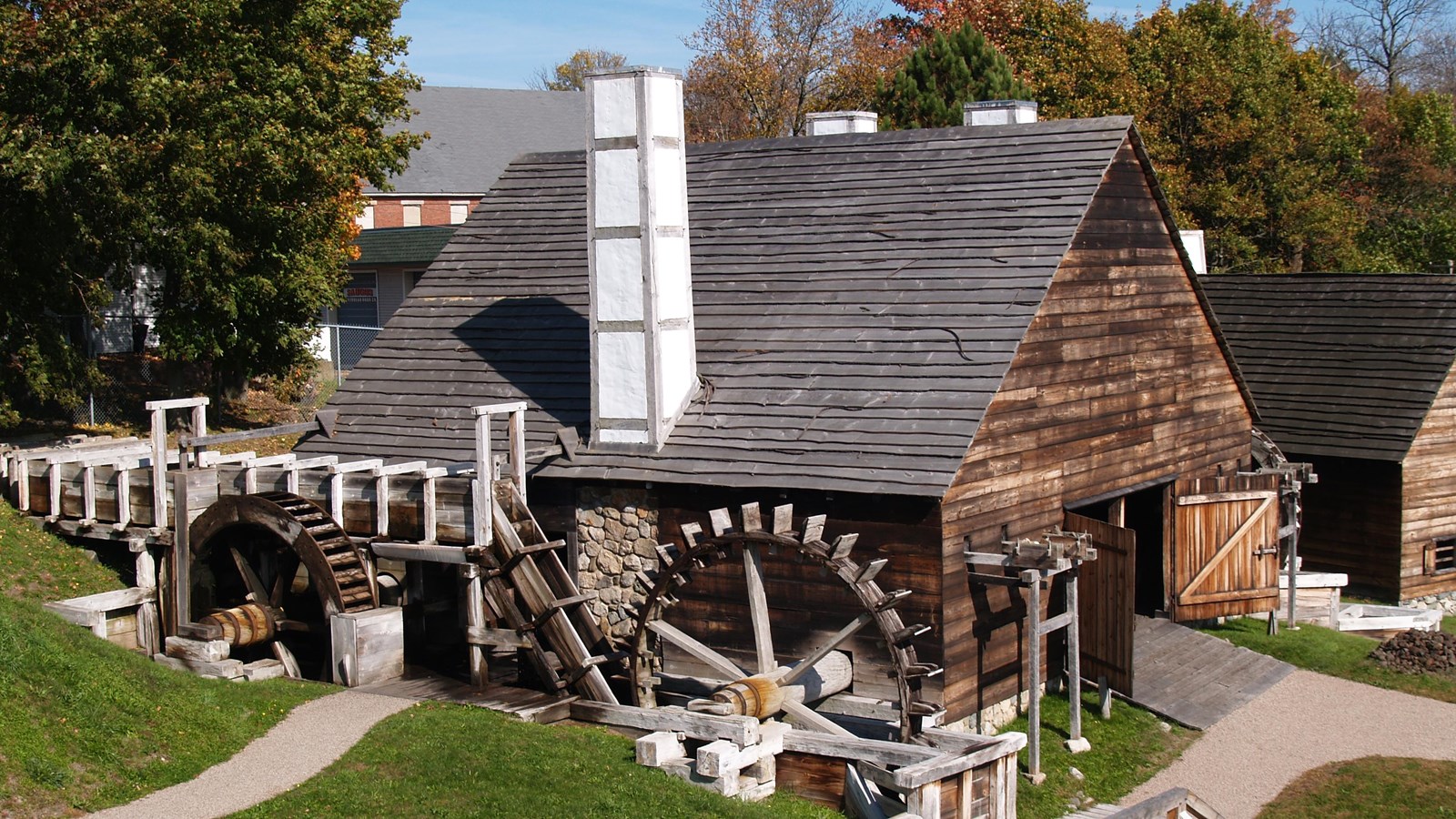Last updated: August 2, 2021
Place
Forge

NPS Photo
Scenic View/Photo Spot
The forge is where bars of pig iron created at the blast furnace were changed into a new kind of iron that a blacksmith was able to use. The bars of pig iron were first brought to the finery hearths. Here, they went through a complex process where portions of the bar were melted and allowed to cool multiple times. This helped burn off much of the excess carbon in the bars, which had made them too brittle to work with. Eventually, the red hot iron was consolidated into a mass called a bloom, which was removed from the hearth for further work.
Workers used sledge hammers to break off a shell of impurities that formed during the refining process. After consolidating the bloom a bit with the sledge hammers, the workers used a 500 pound trip hammer to further solidify the iron and change it into a more easily managed shape. The iron was first shaped into a rough brick called a loop. The loop was then hammered in the center to stretch it out. The iron had to be red hot for this to work, so it was reheated in the chafery hearth in the later steps of the process. Eventually, the iron was hammered into a semi-finished product called a merchant bar.
While the pig iron bars were made of cast iron, and could not be worked, these merchant bars were now made of wrought iron, and could be heated and reshaped. Merchant bars were the main product that the iron works created and sold to blacksmiths. The blacksmiths are the ones who made finished products out of them.
